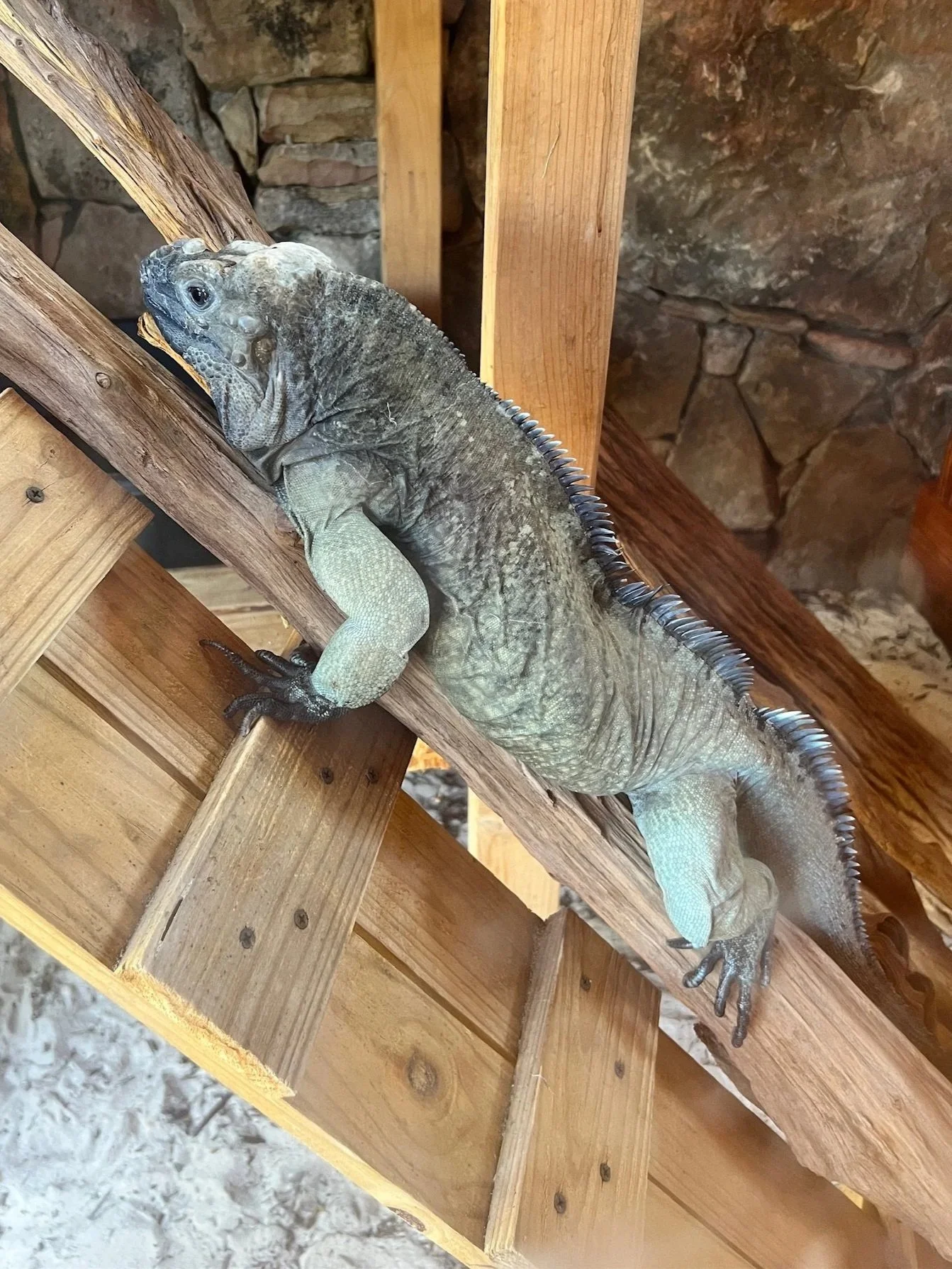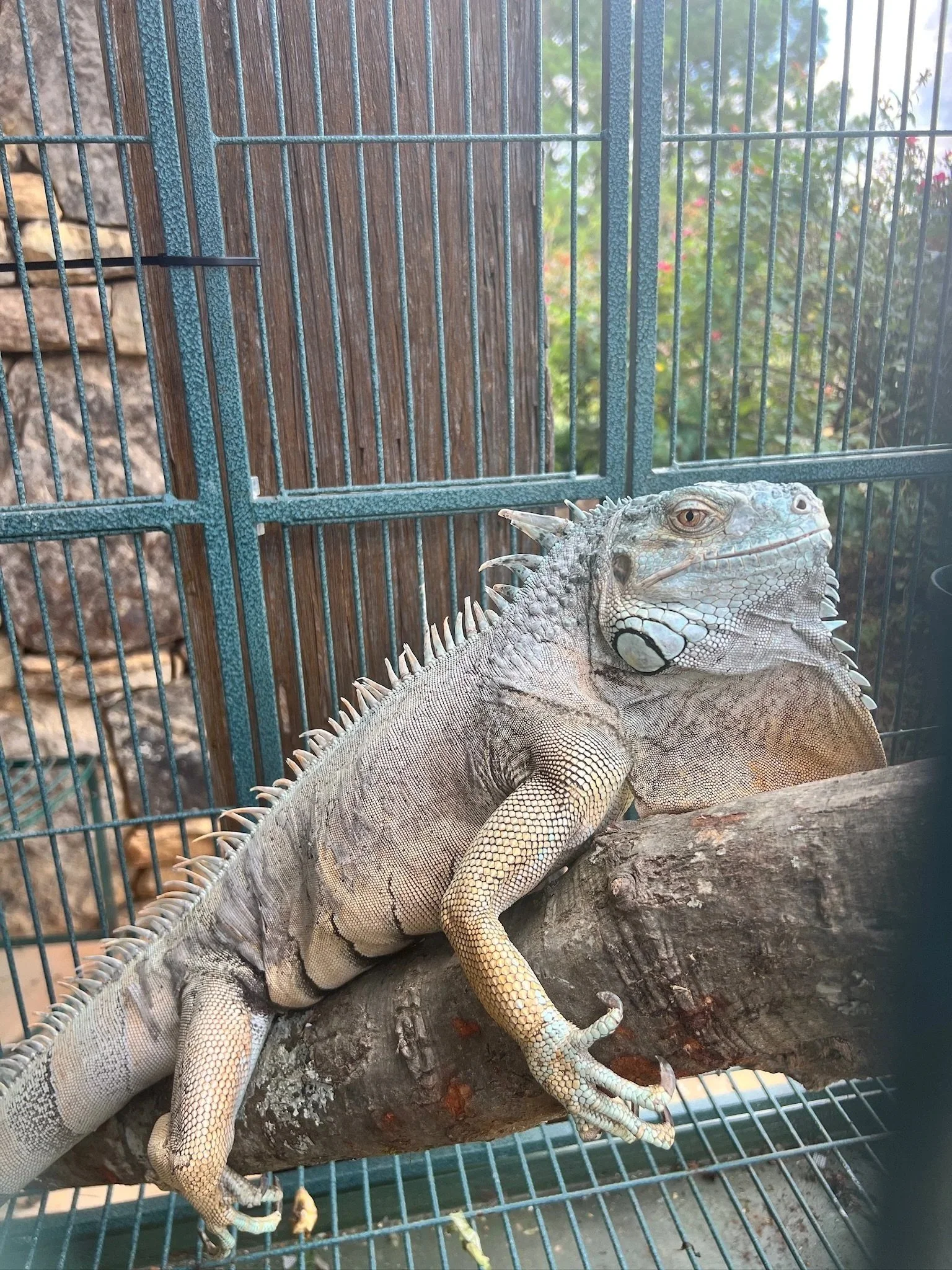Lady Violet
Leopard Gecko
Scientific Name: Eublepharis Macularius
Habitat: Rocky, Dry Grasslands & Deserts
Diet: Insectivore
Weight: 1.6-3 oz.
Conservation Status: Least Concern
Range: Iraq to Northwest India
Lifespan: 10-20
Size: 7-11 in.
The Leopard Gecko is a small to medium-sized lizard. It is easily recognized by its yellowish body covered in dark brown or black spots, resembling a leopard's pattern. Mature Leopard Geckos have a broad head, movable eyelids (unlike many other geckos), and a thick, fat-storing tail that serves as an energy reserve. Their skin is covered in bumpy, granular scales that help reduce water loss in dry environments. They use their clawed toes to climb rocks and small plants. Leopard geckos are active mostly at night and ground-dwelling, spending the day hidden under rocks or in burrows to escape the heat and emerging at night to hunt insects and other small invertebrates. They are alone-loving creatures by nature, with minimal social interaction outside of breeding. During the breeding season, which typically occurs in warmer months, males court females through tail vibrations and gentle biting. After successful mating, females lay one or two eggs per clutch, often in hidden, moist areas. They may lay multiple clutches throughout the season. Eggs incubate for 35 to 90 days, depending on temperature, and incubation temperature can influence the sex of the offspring—a trait known as temperature-dependent sex determination. Hatchlings are independent at birth and begin feeding within a few days.
Pretty Girl
Rhino Iguana
Scientific Name: Cyclura Cornuta
Habitat: Tropical Dry Forest, Lowland Shrublands, Coastal Forests
Diet: Herbivore
Weight: 10-20 lbs
Conservation Status: Vulnerable
Range: Island of Hispaniola .
Lifespan: Island of Hispaniola
Size: 24-54 lbs
The Rhino Iguana is a large, heavy-bodied lizard. It is named for the bony, horn-like projections on its snout, which resemble a rhinoceros horn, most prominent in males. These iguanas have thick, rough gray to brown skin, a prominent back crest of spines, and strong limbs with sharp claws for climbing and digging. Rhino iguanas are primarily active during the day and are terrestrial, often basking on sunlit rocks or foraging through dry forests and scrublands. Social behavior includes territorial displays, such as head bobbing and body posturing, particularly during the breeding season, which typically occurs in the early summer months. Males compete for access to females, and after mating, females lay up to 34 eggs in underground nests, which they guard for several days. The eggs incubate for about 85 to 100 days, and hatchlings are fully independent upon emerging. The horns are actually enlarged scales on the head. Independent from birth.
Blu
Common Green Iguana
Scientific Name: Iguana Iguana
Habitat: Tropical & Subtropical Rainforests, Coastal Areas, Mangroves
Diet: Herbivore
Weight: 8.8-13.2 lbs
Conservation Status: Least Concern
Range: Southern Mexico to Brazil, Paraguay, and Bolivia. Caribbian
Lifespan: 12-15 Years
Size: 5-7 Feet
Despite its name, the Green Iguana can come in a myriad of colors, depending on where they are from. Some can have a bluish hue, like our friend Blu, or even reddish or lavender. The row of spines along their backs helps to protect them from predators. They are also able to swing their tails like a whip to harm predators. If grabbed by the tail, it can fall off, and the iguana will regenerate a new tail!
Iguanas are excellent swimmers and can hold their breath for over 20 minutes! They are also very fast, with some capable of reaching speeds of up to 20 miles per hour. While leaping through the trees, an iguana may fall up to 40 feet to the ground, without being injured, to escape predators.
Females bury a clutch of 20-70 eggs once a year. They are left to incubate for 10-15 weeks. Once hatched, the baby iguanas will live in family groups for their first year.


